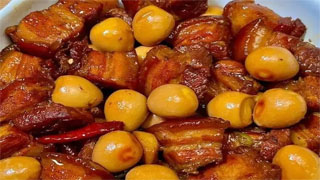
The dietary taboos for patients with hyperlipidemia mainly include the following aspects:
1、 High-fat food
1. Fried food:
-Fried foods such as fried chicken, French fries and deep-fried dough sticks contain a lot of fat, which will increase the levels of triglycerides and cholesterol in the blood. After high-temperature frying, these foods have extremely high oil content and often use repeatedly heated oils, which contain harmful substances.
-For example, in a regular fried chicken, the oil content accounts for more than 30% of the total weight of the food, and long-term consumption can be extremely detrimental to blood lipid control.
2. Animal fat:
-Animal fats such as fatty meat, lard, and butter are rich in saturated fatty acids, and excessive intake can lead to an increase in cholesterol and low-density lipoprotein cholesterol in the blood. These fats are usually solid at room temperature and are relatively easy to distinguish.
-For example, in 100 grams of pork fat, the content of saturated fatty acids can reach about 40 grams, which is a food that high blood lipid patients should strictly avoid.
2、 High sugar foods
1. Candy and pastries:
-Candy such as chocolate, hard candy, and various pastries such as cakes, donuts, etc. contain a large amount of added sugar. These foods not only cause an increase in blood sugar, but also transform into fat in the body, thereby affecting blood lipid levels. Pastry usually contains a high amount of oil, which further exacerbates the adverse effects on blood lipids.
-For example, a regular cream cake with high sugar and oil content is a food that high blood lipid patients should avoid.
2. Sugar sweetened beverages:
-Coca Cola, fruit juice drinks, and other sugary drinks contain a large amount of fructose, and excessive intake can cause the liver to synthesize more triglycerides, leading to elevated blood lipids. Moreover, these beverages usually do not have much nutritional value and can lead to problems such as obesity.
-For example, a 500ml bottle of cola with a sugar content of over 50g is very detrimental to blood lipid control.
3、 High cholesterol foods
1. Animal organs:
-Animal organs such as pig liver, pig kidney, and chicken heart contain extremely high levels of cholesterol. Although animal organs also contain some nutrients, for patients with hyperlipidemia, high cholesterol levels can exacerbate lipid abnormalities.
-For example, in 100 grams of pig liver, the cholesterol content can reach over 300 milligrams, far exceeding the appropriate intake for patients with hyperlipidemia.
2. Crab roe and fish roe:
-Crab roe and fish roe are delicious foods, but their cholesterol content is very high. Crab roe mainly comes from crabs, while fish roe comes from fish. Although these foods are nutritious, they are not suitable for patients with high blood lipids to consume.
-For example, a small spoonful of crab roe contains tens of milligrams of cholesterol, and patients with high blood lipids should try to avoid consuming it as much as possible.
4、 Processed foods and high salt foods
1. Processed meat:
-Processed meats such as sausages, ham, bacon, etc. typically contain high levels of salt and fat, as well as some additives. These foods increase the risk of cardiovascular disease and are not beneficial for patients with high blood lipids.
-For example, in an ordinary sausage, the fat content accounts for about 30% of the total weight, and the salt content is also relatively high.
2. Pickled food:
-Pickled vegetables, salted fish, salted eggs and other pickled foods contain a large amount of salt, which can lead to elevated blood pressure and also affect blood lipid metabolism. Long term consumption of high salt foods can also increase the burden on the kidneys.
-For example, the salt content in a serving of pickled vegetables far exceeds the daily requirement of the human body, and patients with high blood lipids should try to eat less or avoid it.


